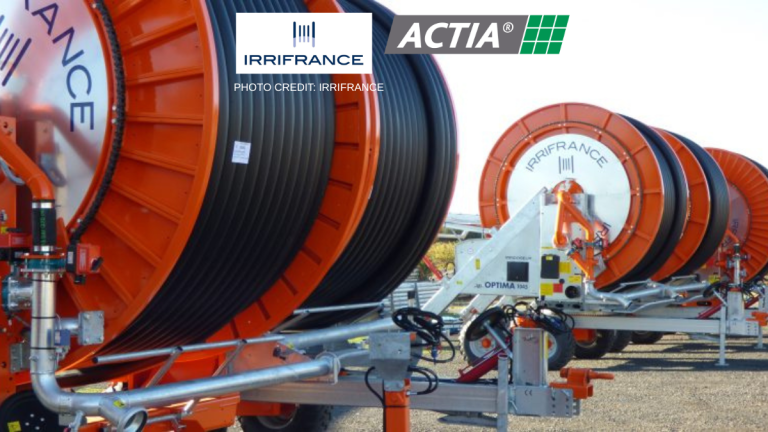ACTIA, as a global player in the automotive electronics industry, has built up solid experience in managing its supply chain. In this highly disrupted global context, ACTIA continues its resilience plan and strengthening its pillars to its relationship with its suppliers : its experience in managing the obsolescence of electronic components and its electronic card redesign program to minimize the impacts of the crisis and ensure delivery continuity to its customers.
“The component crisis is ultimately accelerating electronics and semiconductor innovation. » Jean-Louis PECH, CEO of the ACTIA group.
Resilience of ACTIA’s supply chain
The supplier panel or the “extended enterprise“
ACTIA’s purchasing strategy is based on its market intelligence and the creation of a supplier panel with which ACTIA develops close and long-term partnerships.
« We involve our suppliers very early on in the projects: starting from the innovation and consultation phase for an invitation to tender. This allows our suppliers to understand what our emerging needs will be. For their part, they provide us with their innovation roadmap for their components. This enables early incorporation of innovations into our designs. In this respect, the supplier ecosystem is an extended enterprise. Suppliers are strategic partners for our innovation, the quality of our products, and our competitiveness. The components crisis has obviously furthered this trend. »
Explains Vincent TURMEL, ACTIA Purchasing Director.
A dedicated purchasing team
The key phase in establishing a resilient supply chain is during product development. It is during this stage that the risk mitigation actions are most effective. Therefore, ACTIA has a dedicated purchasing team that is an integral part of the product development team.
This team is tasked with analysing risks throughout the product development period, based on data collected by the Components observatory. The risk analysis is exhaustive and relates to all of the references in the parts list.
Securing future supplies
ACTIA is carrying out an in-depth analysis of its supply chain and suppliers, to secure procurement in the future.
Some criteria for evaluating semiconductor suppliers:
- The longevity of the range of components
- Their production capacities in relation to overall demand.
- The front-end and back-end manufacturing sites.
- Their dependence on subcontracting.
- Their multi-FAB strategy, etc.
ACTIA has expanded its database to include a new criterion, procurability, and according to these criteria, a component will be rated as more or less “procurable”.
The Components observatory: more than 15 years of experience
For more than 15 years, ACTIA has had a dedicated group of at least 20 people in place to continuously monitor the electronics market: the Components observatory. It provides precise information about the electronic components market in order to make the best sourcing decisions, and also to monitor and manage product obsolescence.
ACTIA is one of the few market players to integrate an organization dedicated to the analysis and management of component obsolescence.
This organization uses the component information bases which it completes and consolidates, so that, in the development phase, as in series production, the engineers have a precise vision of the state of all the items in their nomenclature in order to identify and remove risks.
Finally, this organization participates in the process of creating new items, in particular to ensure multisourcing, which is essential to ACTIA’s supply chain resilience strategy.
Multisourcing is THE rule at ACTIA
Working with multiple supply sources is key for mitigating risks and securing the supply chain. Multisourcing is the rule at ACTIA. Sole sourcing is a risk and only applies to very specific components (CPU, PCB, power ICs, etc.). Carried out when a new reference is issued, it allows to:
- Manage the end of life of components,
- Reduce the risks of redesign,
- Address supplier quality issues.
Multisourcing is also an ally when it comes to competitiveness, the crisis has not changed anything there.
Redesign to Deliver
The ACTIA R2D program
On-board electronic products have long life cycles: electronic architectures are replaced every ten years or so. Along the way, however, it will now be necessary to update the circuit board, both to manage obsolescence of certain references and to secure the supply of all components.
ACTIA is committed to this approach to redesigning electronic products, in collaboration with its customers: the Redesign to Deliver (R2D) programme. Drawing on its engineering capability and its expert knowledge of the components market, the group is a preferred partner for manufacturers in order to ensure deliverability of on-board electronic products.
Smooth revisions
ACTIA’s R2D programme has been launched on a selected number of products and takes into consideration:
– the record of all supply issues, since the start of the component’s crisis;
– an update of the assessment of risks for the entire bill of materials.
The programme aims to carry out a limited redesign to mitigate the main risks and also to limit time to market and the technical risks. This limited revision is considered an improvement, unlike a complete revision.
Enrich the technological performance of existing products
A redesign is an effective way to give existing products a new lease of life. Indeed, it is the second most common reason for redesigning a board: improving an existing solution and refining its performance.
ACTIA will take advantage of the redesign to upgrade the technology and enhance the capabilities of the products, as soon as this is practicable.
While the components crisis has accentuated the trend, ACTIA is confident that electronics redesigns will now be necessary throughout the life cycle of all electronic products: not only to mitigate component obsolescence, which is accelerating, but also to ensure reliable and sustainable provision of supplies
- A resilient, agile and sustainable supply chain;
- More than 15 years of experience in component obsolescence management;
- ACTIA’s expertise in card redesign.
ACTIA relies on its organization and its know-how to ensure the deliverability of its products and to face the multiple disturbances of the electronic markets.
BAUMA- Munich 2022 October 24-30
Hall A1 stand 645






